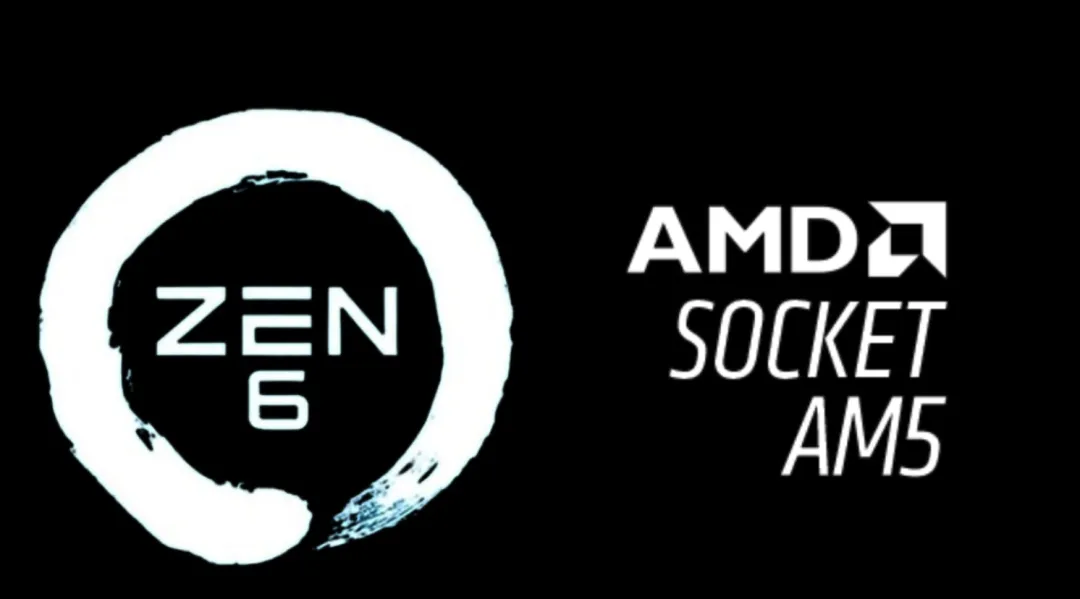AMD’s next-generation Ryzen processors are set to receive a major upgrade with the Zen 6 core “Medusa Ridge” architecture. The new CPUs will feature increased core counts and cache sizes, delivering a more powerful performance experience for users. According to the latest reports, AMD is continuing its high-performance trajectory with new Zen 6 and Zen 6C core designs, with Zen 6 products spanning servers, laptops, and desktop markets. Even more exciting is that these processors are expected to maintain compatibility with the existing AM5 socket, allowing current users to enjoy the benefits of new technology without needing additional hardware upgrades.

Reliable industry sources reveal that the Zen 6 “Medusa Ridge” Ryzen CPU series will offer configurations of 12 cores, 24 cores, and 32 cores, doubling the core count of the current Zen series’ top-tier 16-core flagship. Specifically, the 12-core and 24-core variants will come with 96MB of L3 cache, while the top-end 32-core version will boast an impressive 128MB of L3 cache. Breaking down the cache specs further, a single Zen 6 CCD (Core Complex Die) will integrate 48MB of L3 cache, with a dual-CCD setup reaching 96MB. For the 32-core version using Zen 6C cores, a single CCD will feature 64MB of cache, totaling 128MB across dual CCDs. This represents a 50% increase in cache capacity per Zen 6 CCD compared to Zen 5, and a doubling for Zen 6C CCDs, significantly boosting multi-threaded task performance.
Notably, these figures are based on non-X3D models. AMD has already successfully implemented second-generation 3D V-Cache technology in the Zen 5-based Ryzen 9000 series. Looking ahead to Zen 6, the cache sizes of non-X3D models are already impressive, and if X3D technology is introduced, cache capacity could see further breakthroughs. There’s even speculation about high-end models with dual CCDs both equipped with 3D V-Cache. AMD reportedly has the technology in hand, but whether a dual-X3D configuration materializes will depend on cost and market demand.

The upgrades in Zen 6 go beyond just core count increases. Industry forecasts suggest this generation will adopt TSMC’s 3nm process, with some high-end models potentially stepping up to 2nm, shrinking transistor sizes for improved power efficiency and computational speed. Additionally, Zen 6 is expected to optimize internal chip interconnects, possibly incorporating silicon interposer technology to enhance data transfer bandwidth between CCDs and the I/O die while reducing latency. These improvements will provide significant benefits for multi-core performance and high-load scenarios like video rendering and scientific computing.
Beyond desktops, the Zen 6 architecture will extend to mobile platforms. The mobile processor, codenamed “Medusa Point,” is expected to feature a 12-core Zen 6 CCD paired with an integrated GPU based on the UDNA architecture (though some reports suggest it might still be RDNA 3.5). Rumors indicate the RDNA 5 iGPU will include 16 compute units and possibly 8MB to 16MB of Infinity Cache, further optimizing 1080p and 1440p gaming performance. This positions Zen 6 APUs as strong contenders in thin-and-light laptops and compact gaming devices.
In terms of timeline, Zen 6 “Medusa Ridge” is expected to debut between late 2026 and early 2027, aligning with AMD’s commitment to support the AM5 platform “through 2027 and beyond.” By comparison, the support duration for Intel’s competing LGA 1851 platform remains unclear, making AM5’s stability a more appealing choice.
Furthermore, AMD is exploring additional technological possibilities. Reports suggest Zen 6 may integrate the XDNA 2 NPU, delivering at least 50 TOPS of AI computing power to meet the growing demand for machine learning. The memory controller is also expected to support higher-frequency DDR5, potentially laying the groundwork for future DDR6 compatibility. These features will give Zen 6 an edge in content creation, AI development, and high-end gaming.
From core counts to cache sizes, manufacturing processes, and interconnect optimizations, Zen 6 “Medusa Ridge” showcases AMD’s vision for the future of computing performance. Whether for desktop enthusiasts or mobile device users, this generation of processors is one to watch.
